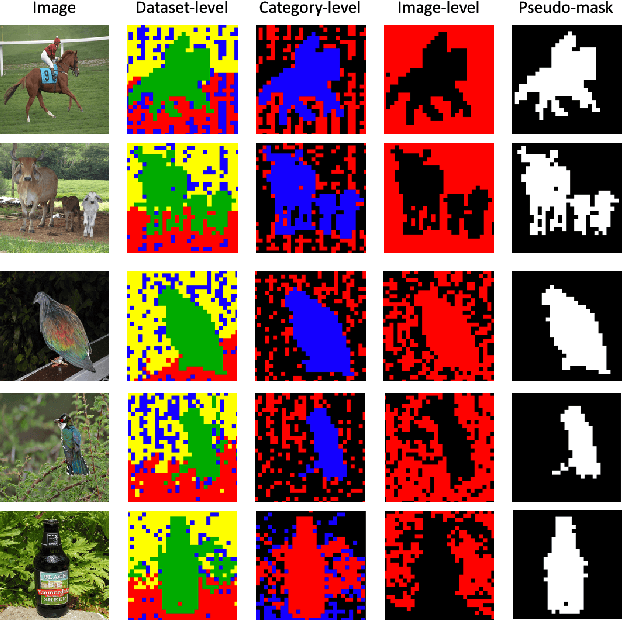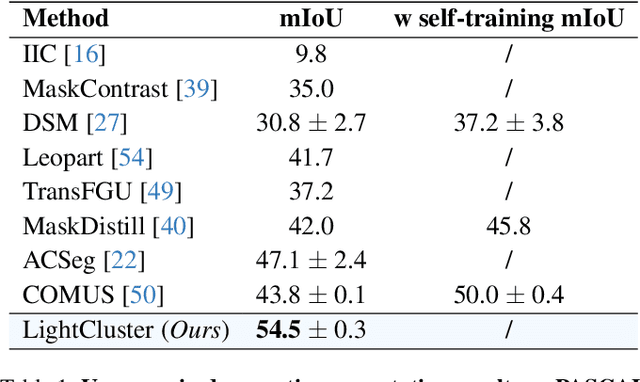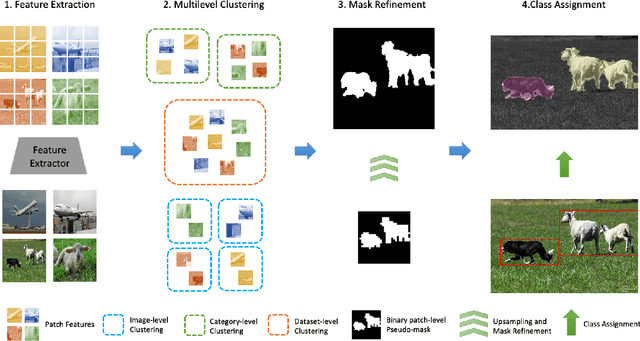Yau Shing Jonathan Cheung
A Lightweight Clustering Framework for Unsupervised Semantic Segmentation
Nov 30, 2023



Abstract:Unsupervised semantic segmentation aims to label each pixel of an image to a corresponding class without the use of annotated data. It is a widely researched area as obtaining labeled datasets are expensive. While previous works in the field demonstrated a gradual improvement in segmentation performance, most of them required neural network training. This made segmentation equally expensive, especially when dealing with large-scale datasets. We thereby propose a lightweight clustering framework for unsupervised semantic segmentation. Attention features of the self-supervised vision transformer exhibit strong foreground-background differentiability. By clustering these features into a small number of clusters, we could separate foreground and background image patches into distinct groupings. In our clustering framework, we first obtain attention features from the self-supervised vision transformer. Then we extract Dataset-level, Category-level and Image-level masks by clustering features within the same dataset, category and image. We further ensure multilevel clustering consistency across the three levels and this allows us to extract patch-level binary pseudo-masks. Finally, the pseudo-mask is upsampled, refined and class assignment is performed according to the CLS token of object regions. Our framework demonstrates great promise in unsupervised semantic segmentation and achieves state-of-the-art results on PASCAL VOC and MS COCO datasets.
ScribbleSeg: Scribble-based Interactive Image Segmentation
Mar 20, 2023Abstract:Interactive segmentation enables users to extract masks by providing simple annotations to indicate the target, such as boxes, clicks, or scribbles. Among these interaction formats, scribbles are the most flexible as they can be of arbitrary shapes and sizes. This enables scribbles to provide more indications of the target object. However, previous works mainly focus on click-based configuration, and the scribble-based setting is rarely explored. In this work, we attempt to formulate a standard protocol for scribble-based interactive segmentation. Basically, we design diversified strategies to simulate scribbles for training, propose a deterministic scribble generator for evaluation, and construct a challenging benchmark. Besides, we build a strong framework ScribbleSeg, consisting of a Prototype Adaption Module(PAM) and a Corrective Refine Module (CRM), for the task. Extensive experiments show that ScribbleSeg performs notably better than previous click-based methods. We hope this could serve as a more powerful and general solution for interactive segmentation. Our code will be made available.
 Add to Chrome
Add to Chrome Add to Firefox
Add to Firefox Add to Edge
Add to Edge